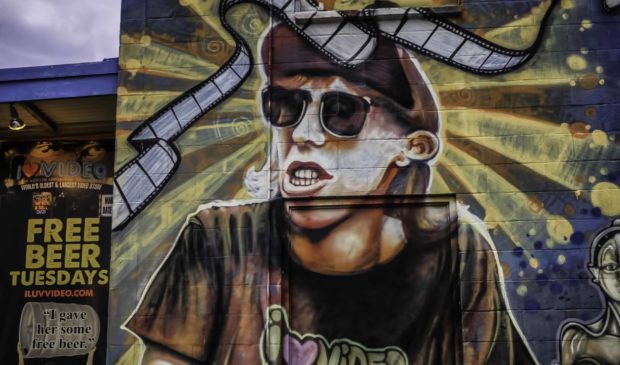About the Author
Chad Swiatecki is a 20-year journalist who relocated to Austin from his home state of Michigan in 2008. He most enjoys covering the intersection of arts, business and local/state politics. He has written for Rolling Stone, Spin, New York Daily News, Texas Monthly, Austin American-Statesman and many other regional and national outlets.
Newsletter Signup
The Austin Monitor thanks its sponsors. Become one.
Most Popular Stories
- Audit: Economic official granted arts, music funding against city code
- Dozens of city music grants stalled over missing final reports
- City leaders evaluate surprising ideas for water conservation
- Parks Board recommends vendor for Zilker Café, while voicing concerns about lack of local presence
- Council reaffirms its commitment to making Austin a more age-friendly city
-
Discover News By District
Popular Whispers
Sorry. No data so far.

City’s affordability crisis threatens to price out creative class
Thursday, April 28, 2022 by Chad Swiatecki
Leaders in the region’s entertainment and sports event industries see problems ahead if the city can’t address affordability problems that are forcing artists and working-class audiences to relocate to nearby suburbs.
Pointing to the rising cost of living, transportation and other infrastructure issues, panelists at this month’s Urban Land Institute of Austin breakfast stressed that, while the city is growing as a destination for tourists and major businesses, its reputation as a creative mecca is threatened by rising median incomes and home prices.
Veronica Cantu, vice president of marketing for the new Moody Center arena downtown, said home prices routinely climbing above half a million dollars limit the options for longtime residents and newcomers who don’t have six-figure incomes from the influx of technology companies to the area.
“We’ve priced out creatives and we’ve priced out entertainers, and for me that is a huge red flag for the future of the city. When you do that everything you have is the same. Now you can really only afford to live here if you’re in tech, and with that the diversity in Central Texas starts getting priced out,” she said. “The median house is now somewhere around $550,000, and in our industry you can’t afford that, so you have to get married or have a dual income. That creates a sameness of the people who can afford to live here.”
Cantu said those concerns impact her role because working-class fans of music and other live events may not have enough disposable income for tickets, and it’s becoming harder to find employees to fill the many jobs available at the facility.
Bobby Epstein, a partner at the Circuit of the Americas racetrack and concert venue, said the developer and real estate professionals in attendance could get an easy return by building housing near the track and paying the estimated $20 million to expand the two-lane state road that has become a regular choke point for fans attending events. He said the lack of housing, retail and public services in the area near COTA and Austin-Bergstrom International Airport needs to be addressed as population growth moves into the area.
“What I couldn’t appreciate is what a dearth of services there were to people who live in Southeast Austin. When you look at equitable growth and see where Project Connect has drawn their lines, it’s following the lines of existing populations and wealth,” he said. “There are very few services out there and no restaurant within two miles of where we are in the city of Austin, as well as no public transportation and bus routes to service the area … no groceries, no hospital, and we’re as close to downtown as the other side of the Domain.”
Epstein said he sees promise in the number of high-rise residential projects in progress downtown because those units will attract some of the wealthy buyers who may otherwise look to purchase from the city’s limited stock of single-family homes.
Pointing at Austin’s laid-back legacy from the early ’90s film Slacker, Hugh Forrest, chief programming officer for South by Southwest, said young adults no longer have a variety of homes and places where they can comfortably exist and follow their passions without aggressively pursuing business or career interests.
“The best thing for creativity is having a place where people in their 20s can live affordably, and that is certainly one of the city’s biggest challenges moving forward. They’re not doing anything but they’re eventually coming up with creative ideas. I don’t think we have places in the city of Austin where 20-year-olds can sit around and do whatever they’re going to do to think about what they’re going to do in the future, and that is a concern to me,” he said.
“We need more affordable housing solutions for our creative class. It’s going to be a central issue in the upcoming mayoral race and there are no easy answers. We’ve also got to improve our transportation systems because if you can’t afford to live in Austin and have to move to Pflugerville or Buda or wherever that means, you then have to drive a long ways to get into the city we have now.”
Photo made available through a Creative Commons license.
The Austin Monitor’s work is made possible by donations from the community. Though our reporting covers donors from time to time, we are careful to keep business and editorial efforts separate while maintaining transparency. A complete list of donors is available here, and our code of ethics is explained here.
You're a community leader
And we’re honored you look to us for serious, in-depth news. You know a strong community needs local and dedicated watchdog reporting. We’re here for you and that won’t change. Now will you take the powerful next step and support our nonprofit news organization?



